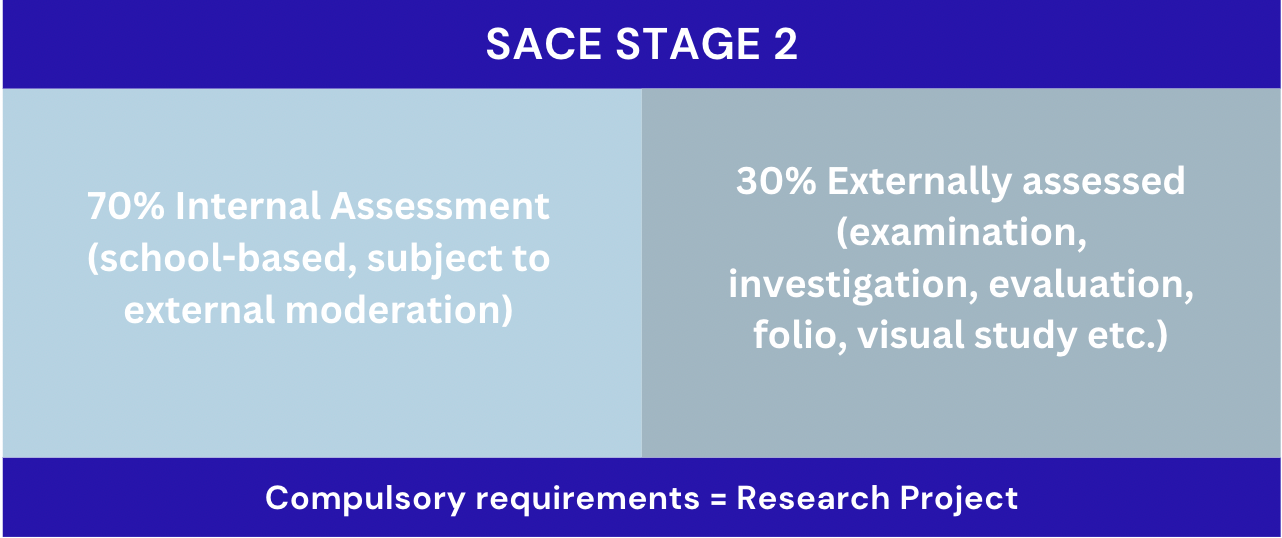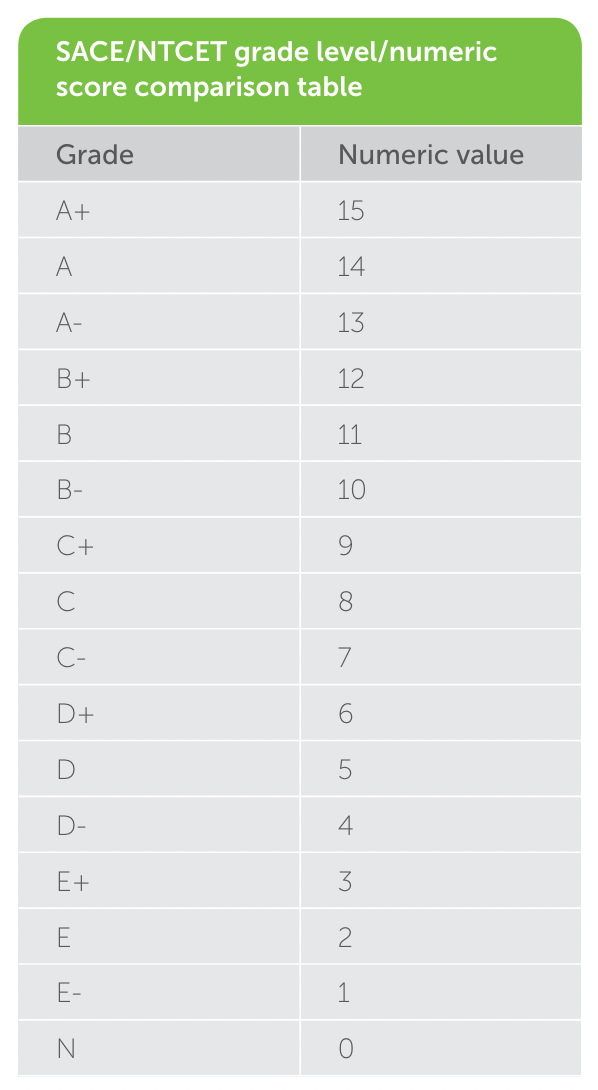What is Scaling in the SACE and why does it exist?
Scaling manipulates a student's exam score to a standardised mark that allows SATAC (South Australian Tertiary Admissions Centre) to fairly compare the performance of students despite their choice of SACE subject.
For each SACE subject you complete, you get an overall grade (A+ to E-) which tells SATAC how well you performed compared to other students studying the same subject. However, some subjects are harder than others due to their course content or the number of students competing in the subject. This is where scaling comes in to ensure fair comparisons between the different subjects so that ATAR scoring does not disadvantage students who select more challenging subjects.
How does SACE Scaling work?
Your SACE score is a combination of 70% of your internal assessment mark and 30% of your externally assessed assessment mark.

SATAC takes all results for all SACE subjects and analyses them according to what is called the Equal Achievement Principle.
- SATAC takes your grades from your assessment tasks in each subject and assigns them a numeric equivalent.

- Then, using the weightings applied for each assessment task, an overall numerical score is calculated for each subject.
- Your final raw score will be the sum of this score and a numeric result of the publically assessed component giving you a final score out of 15.
Internal score out of 10.5 (70%) + the externally assessed contribution out of 4.5 (30%) = SACE subject score
A more in-depth explanation of how SATAC calculates raw scores for scaling can be found here.
Now, once the raw score is calculated for all the subjects they will be standardised such that they all have the same average. This may mean some scores get shifted up and some get shifted down.
Standardising is done by comparing common candidature - students that take both subjects.
Let's take English and Biology for example. Looking at the students who took both English and Biology, they had an average English score of 95 and a Biology score of 85. This implies to SATAC that Biology was more challenging than English and the subjects will be scaled accordingly until the average subject scores are the same.
This process is done with every subject combination possible until all SACE subjects have been scaled to a standardised setting.
Scaling trends from previous years
While scaling will differ year by year because it is determined by the performance of the cohort, difficulty of the exam and popularity of the subject that year, some general trends have been seen to repeat in the past.
- B grade in examined subjects gives approximately the same scaled score as an A grade in non-examined subjects.
- C grade in any science gives a higher scaled score than a B grade in PE, Art, Tech or Outdoor Ed.
- C in Mathematical Methods is approximately the same as B in General Mathematics (plus 2 bonus points).
SACE to ATAR conversion
Each SACE student then receives a University aggregate out of 90, which is then converted to an Australian Tertiary Admission Ranking (ATAR) with a maximum ranking of 99.95.
Aggregated score to ATAR conversion table for 2023
To calculate an ATAR from your university aggregate, SATAC looks at the percentage of students who achieved the same aggregate as you, or better.
SATAC then assign a percentile rank out of 100 for each university aggregate achieved. For example, if you get an aggregated score of 80 and it is found that 10% of SACE students got 80 or above then it is safe to conclude you sit in the top 10% of students, thus giving you an ATAR of 90.00.

Want more personalized study guidance to help drastically improve your marks? A private tutor can make the biggest difference!







